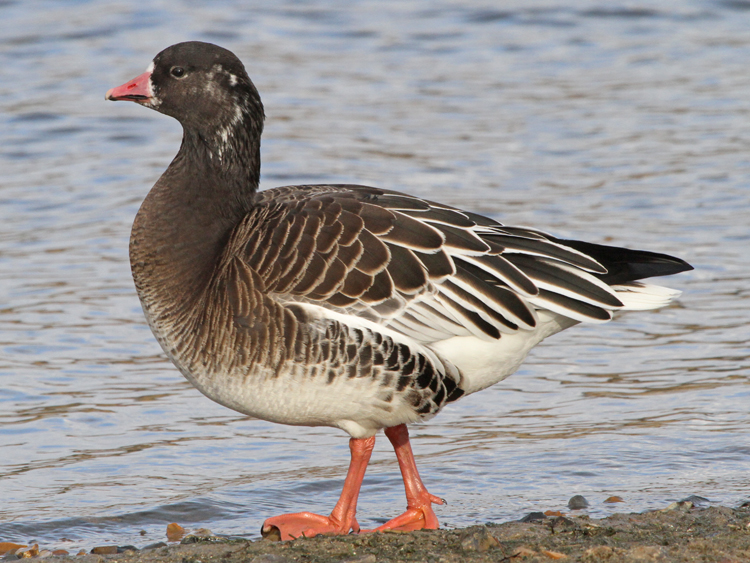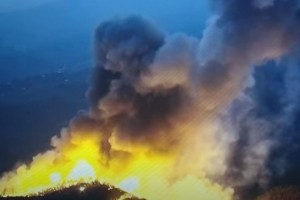Lesser white–fronted goose: Red Data Book of Armenia

Ducks, geese and swans — Anatidae
Status. A migratory, nesting and wintering rare species of limited distribution. Listed in the IUCN Red List of Threatened Species (ver. 3.1) as Vulnerable VU A2bcd+3bcd+4bcd. According to IUCN criteria categorized as Vulnerable VU A2bcd+3bcd+4bcd.
Distribution. Distributed in the tundra zone of Eurasia, from Nordic countries to the Chukotka Peninsula. Winters in Europe, more frequently in the Balkan Peninsula, Asia Minor, Iran, Southern China, Korea, Japan and the South Caucasus.
Distribution in Armenia. Occurs during the spring and autumn migrations on the Lake Sevan and in the Arax riverside. Winters in the Arax riverside, but not every year.
Habitats. During the nesting season occurs in tundra, on mountain lakes, rivers and downhills. In winter prefers the food–rich areas of wide viewfield, fields, grasslands, shorelines and banks.
Biological traits. Nesting grounds encompass the areas with dense herbage, shrubs and rocks. The nest is richly fledged with down and littered with dry plants. Eggs are whitish–yellow, 4–8/clutch, size 69–87 mm. The brooding period is 26–28 days.
Population size and its trends. Has always been rare. Recorded in flocks of 5–10 individuals during migrations and wintering.
Major threats. Disturbance and poaching in the Lake Sevan basin and the Arax riverside.
Conservation measures. Listed in Appendix II of the Berne Convention. Protected in Sevan National Park. It is essential to estimate population size throughout a year, ensure proper conservation and to strengthen anti–poaching activities.
Suggestions
 The Ministry of Environment sent a letter international partners to draw their attention to the real danger of environmental disasters as a result of Azerbaijan's large-scale aggression towards the territory of Armenia
The Ministry of Environment sent a letter international partners to draw their attention to the real danger of environmental disasters as a result of Azerbaijan's large-scale aggression towards the territory of Armenia
 The Minister of Environment addressed a letter to international organizations and partners
The Minister of Environment addressed a letter to international organizations and partners
 ECOCIDE ALERT IN THE SOUTHERN CAUCASUS! White phosphorous munitions are dangerous chemical weapon
ECOCIDE ALERT IN THE SOUTHERN CAUCASUS! White phosphorous munitions are dangerous chemical weapon
 Vicia pisiformis: Red Data Book of Armenia
Vicia pisiformis: Red Data Book of Armenia
 Vavilovia formosa: Red Data Book of Armenia
Vavilovia formosa: Red Data Book of Armenia












